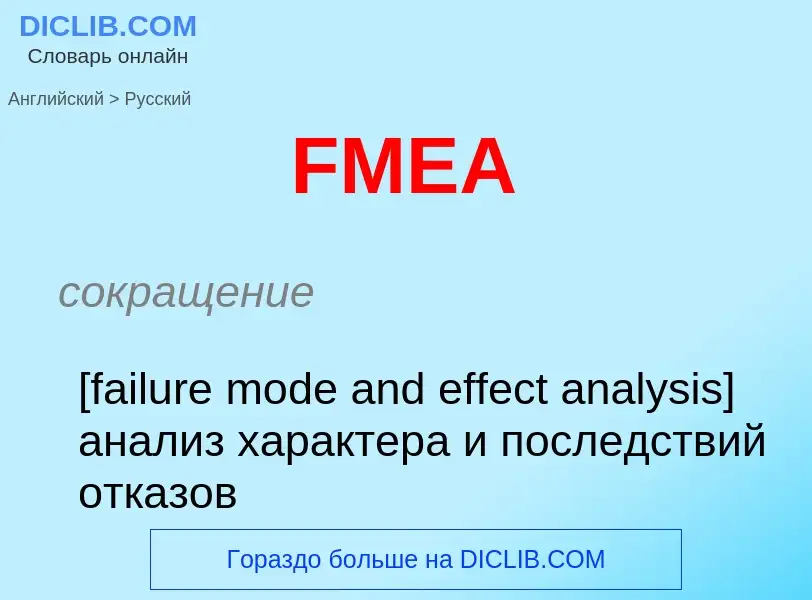Перевод и анализ слов искусственным интеллектом ChatGPT
На этой странице Вы можете получить подробный анализ слова или словосочетания, произведенный с помощью лучшей на сегодняшний день технологии искусственного интеллекта:
- как употребляется слово
- частота употребления
- используется оно чаще в устной или письменной речи
- варианты перевода слова
- примеры употребления (несколько фраз с переводом)
- этимология
FMEA - перевод на русский
сокращение
[failure mode and effect analysis] анализ характера и последствий отказов
Википедия
Failure mode and effects analysis (FMEA; often written with "failure modes" in plural) is the process of reviewing as many components, assemblies, and subsystems as possible to identify potential failure modes in a system and their causes and effects. For each component, the failure modes and their resulting effects on the rest of the system are recorded in a specific FMEA worksheet. There are numerous variations of such worksheets. An FMEA can be a qualitative analysis, but may be put on a quantitative basis when mathematical failure rate models are combined with a statistical failure mode ratio database. It was one of the first highly structured, systematic techniques for failure analysis. It was developed by reliability engineers in the late 1950s to study problems that might arise from malfunctions of military systems. An FMEA is often the first step of a system reliability study.
A few different types of FMEA analyses exist, such as:
- Functional
- Design
- Process
Sometimes FMEA is extended to FMECA (failure mode, effects, and criticality analysis) to indicate that criticality analysis is performed too.
FMEA is an inductive reasoning (forward logic) single point of failure analysis and is a core task in reliability engineering, safety engineering and quality engineering.
A successful FMEA activity helps identify potential failure modes based on experience with similar products and processes—or based on common physics of failure logic. It is widely used in development and manufacturing industries in various phases of the product life cycle. Effects analysis refers to studying the consequences of those failures on different system levels.
Functional analyses are needed as an input to determine correct failure modes, at all system levels, both for functional FMEA or piece-part (hardware) FMEA. An FMEA is used to structure mitigation for risk reduction based on either failure (mode) effect severity reduction or based on lowering the probability of failure or both. The FMEA is in principle a full inductive (forward logic) analysis, however the failure probability can only be estimated or reduced by understanding the failure mechanism. Hence, FMEA may include information on causes of failure (deductive analysis) to reduce the possibility of occurrence by eliminating identified (root) causes.

